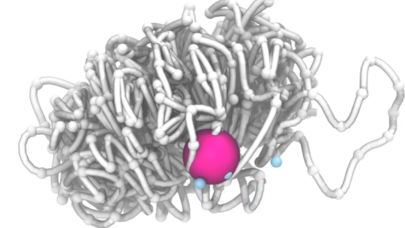
LANL Report – Looming Fortran Talent Scarcity is Threatening
May 1, 2023
A new report from Los Alamos National Lab sounds alarms over the declining number of Fortran programmers, the shrinking number of efforts to teach Fortran, and Read more…

2022 HPC Road Trip: Los Alamos
November 23, 2022
With SC22 in the rearview mirror, it’s time to get back to the 2022 Great American Supercomputing Road Trip. To refresh everyone’s memory, I jumped in the c Read more…

Los Alamos Installs Sapphire Rapids-Based ‘Tycho,’ First Phase of Crossroads
October 22, 2022
When complete, the Crossroads supercomputer at Los Alamos National Laboratory (LANL) is expected to deliver quadruple the performance of LANL’s already-powerful Trinity supercomputer (20.16 Linpack petaflops). Now, the first phase of Crossroads – called “Tycho” – has been successfully installed at the lab, with the... Read more…

Nvidia’s Grace Superchips to Debut on Venado Supercomputer
May 30, 2022
In March, Nvidia unveiled its two new Grace Superchips: the Grace CPU Superchip, aimed at datacenters, comprises dual Arm-based Grace CPU chips; the Grace Hopper Superchip, meanwhile, combines a Grace CPU with a Hopper GPU in a single SoC. Now, at ISC 2022... Read more…

Los Alamos’ Chicoma Supercomputer to Host 75 New Projects
March 17, 2022
In late 2020, Los Alamos National Laboratory (LANL) — which operates under the Department of Energy’s National Nuclear Security Administration (NNSA) — co Read more…

Five Supercomputers Help Model Crucial Elements of HIV-1
February 25, 2022
The Covid-19 pandemic has brought into sharp relief how small elements of a virus can play a crucial role in combating it with therapeutic drugs and vaccines. I Read more…

Los Alamos Supercomputers Uncover Subtleties of the X Chromosome
October 9, 2021
X chromosome inactivation equalizes the active X chromosomes between mammals with two X chromosomes and mammals with one X and one Y chromosome – however, the Read more…

Los Alamos Develops Binary-to-DNA Translator
April 5, 2021
Tape storage has dominated high-volume data storage for many decades, and with data production continuing to grow exponentially, researchers are eager to find a Read more…

- Click Here for More Headlines

Whitepaper
Why IT Must Have an Influential Role in Strategic Decisions About Sustainability
In this era, expansion in digital infrastructure capacity is inevitable. Parallel to this, climate change consciousness is also rising, making sustainability a mandatory part of the organization’s functioning. As computing workloads such as AI and HPC continue to surge, so does the energy consumption, posing environmental woes. IT departments within organizations have a crucial role in combating this challenge. They can significantly drive sustainable practices by influencing newer technologies and process adoption that aid in mitigating the effects of climate change.
While buying more sustainable IT solutions is an option, partnering with IT solutions providers, such and Lenovo and Intel, who are committed to sustainability and aiding customers in executing sustainability strategies is likely to be more impactful.
Learn how Lenovo and Intel, through their partnership, are strongly positioned to address this need with their innovations driving energy efficiency and environmental stewardship.
Download Now
Sponsored by Lenovo
Whitepaper
How Direct Liquid Cooling Improves Data Center Energy Efficiency
Data centers are experiencing increasing power consumption, space constraints and cooling demands due to the unprecedented computing power required by today’s chips and servers. HVAC cooling systems consume approximately 40% of a data center’s electricity. These systems traditionally use air conditioning, air handling and fans to cool the data center facility and IT equipment, ultimately resulting in high energy consumption and high carbon emissions. Data centers are moving to direct liquid cooled (DLC) systems to improve cooling efficiency thus lowering their PUE, operating expenses (OPEX) and carbon footprint.
This paper describes how CoolIT Systems (CoolIT) meets the need for improved energy efficiency in data centers and includes case studies that show how CoolIT’s DLC solutions improve energy efficiency, increase rack density, lower OPEX, and enable sustainability programs. CoolIT is the global market and innovation leader in scalable DLC solutions for the world’s most demanding computing environments. CoolIT’s end-to-end solutions meet the rising demand in cooling and the rising demand for energy efficiency.
Download Now
Sponsored by CoolIT
Advanced Scale Career Development & Workforce Enhancement Center
Featured Advanced Scale Jobs:
HPCwire Resource Library
HPCwire Product Showcase
© 2024 HPCwire. All Rights Reserved. A Tabor Communications Publication
HPCwire is a registered trademark of Tabor Communications, Inc. Use of this site is governed by our Terms of Use and Privacy Policy.
Reproduction in whole or in part in any form or medium without express written permission of Tabor Communications, Inc. is prohibited.
























